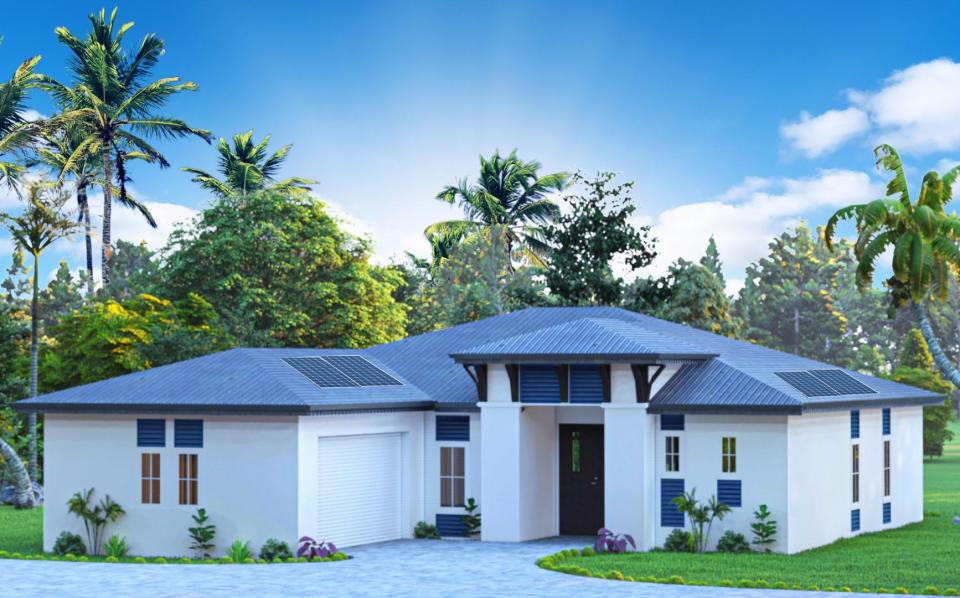Kaye Lifestyle Homes takes hurricane-resilient design to the next level

Kaye Lifestyles Homes takes hurricane-resilient design to the next level by introducing new smart systems, clean energy products and intelligent technologies that allow homeowners to maintain continuous power throughout any disturbance, interruption or outage.
“Resilience is the new green,” says owner Stuart Kaye, noting the benefit of resilient design is more than sustainability. “Hurricane-resilient homes help homeowners survive power outages, extreme weather effects, and save energy. It also helps the community because homes that survive a major storm or fire, reduce the number of disaster-related debris that ends up in the landfill,” he adds.
Every home is different, so Kaye offers customized consultations with an ala carte menu of resilient-design homebuilding strategies. Key elements listed below include using such features as higher insulation levels, windows that can withstand hurricane winds and optimizing the use of on-site renewable solar power and back-up batteries.
Higher insulation
Continuous insulation, rated for higher wind speeds, is a spray-foam adhesive applied on the inside of the house’s roof. This adhesive insulation acts like glue, strengthening the connections of structural supports in the home. It’s also water-resistant and can withstand floodwaters for days without getting waterlogged.
Stronger windows
Impact-resistant glass protects against wind, water and debris and is considered more efficient and provides better insulation with a lower solar heat gain coefficient (SHGC) -- the fraction of solar radiation let in through a window, door, or skylight released as heat inside a home. The lower the SHGC, the less solar heat it transmits and the greater its shading ability. A product with a high SHGC rating is more effective at collecting solar heat during the winter. A product with a low SHGC rating is more effective at reducing cooling loads during the summer by blocking heat gain from the sun.
Solar power with battery back-up
Owners can produce their own energy by integrating solar panels and batteries into their home design so they will not have to depend upon the electric company, propane or other fossil fuels to keep their home running itself if a hurricane knocks out the power grid, says Kaye.
“Batteries are much improved over what they were 10 years ago. Today, batteries provide a continuous output of energy and give the ability to produce their own power at night,” says Kaye. “By installing a backup battery system, the solar system charges the batteries, so homeowners can pull electricity from the battery, then top it back up the next day when the sun is out and solar panels are recharged.”
Intelligent systems
No longer guess at how much power is being used and what each circuit is using (or has used in the past). KLH offers a complete hurricane resiliency system called SPAN, invented by Arch Rao, former head of engineering at Tesla Energy and now CEO of SPAN. It’s a modern looking intelligent system on the phone or computer app that monitors energy usage.
“SPAN supports prioritized needs – critical loads versus non critical -- essentially, what goes dark first and allows the homeowner control of every circuit in the home right from their phone,” says Kaye. “For example, to restart a whole-home A/C system (an absolute must in Florida) can require up to 30 amps (energy). Other power-hungry appliances and the number of amps required to restart and provide power include turning on house lights (15 amps), microwave (12 amps) and refrigerator (5 amps).”
Reverse osmosis
One of the biggest concerns following an emergency is providing redundant water supplies or water storage for drinking, cooking, washing and toilet flushing. “For homes built with deep-well pump systems, a lot of power is required to restart the pump, so we recommend homeowners install a whole-house reverse osmosis (RO) system,” says Kaye. Reverse osmosis technology produces purified water in a 300-gallon holding tank and requires significantly less power to start up than a well pump.
Not as expensive as you may think
“There is a short cost differential between meeting the standard code and building a hurricane-resilient home,” says Kaye. On average, it costs about 12-15% base price of a new home for full hurricane resiliency with a typical payback period about eight to 10 years. A 26% federal tax credit on solar panel costs helps shoulder some of the burden, but Kaye points out that when costs are included in a mortgage, the payoff begins instantly.
This article originally appeared on Naples Daily News: Kaye Lifestyle Homes takes hurricane-resilient design to the next level
